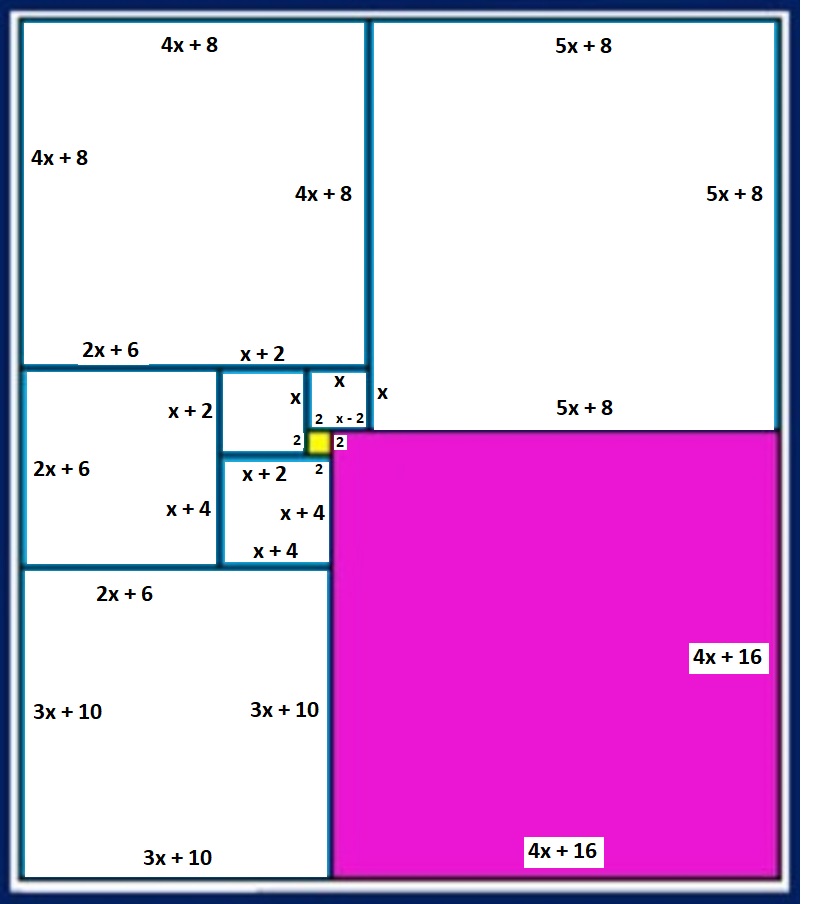Let x = length of the side of the next largest square.
Look at the diagram, the next largest square after that would have a length of x + 2.
Then the next square would have a length of x + 4 (again, refer to the diagram and how the squares fit together.
Now the next square would have a length of (x + 2) + (x + 4) or 2x + 6.
Then the square in the bottom left corner would have a length of 3x + 10.
Now go to the top left corner. That square will be the sum of the three smaller sides:
x + (x + 2) + (2x + 6) = 4x + 8.
Then the top right corner's square has a length of x + (4x + 8).
Now look at the pink square: You have two different representations for the sides.
Set these equal to each other (since it is a square) and solve for x. Then you can figure out the length of the side.
Be careful, when you solve for x and then the side of the pink square; the question asks for the AREA, not the length of the side.

